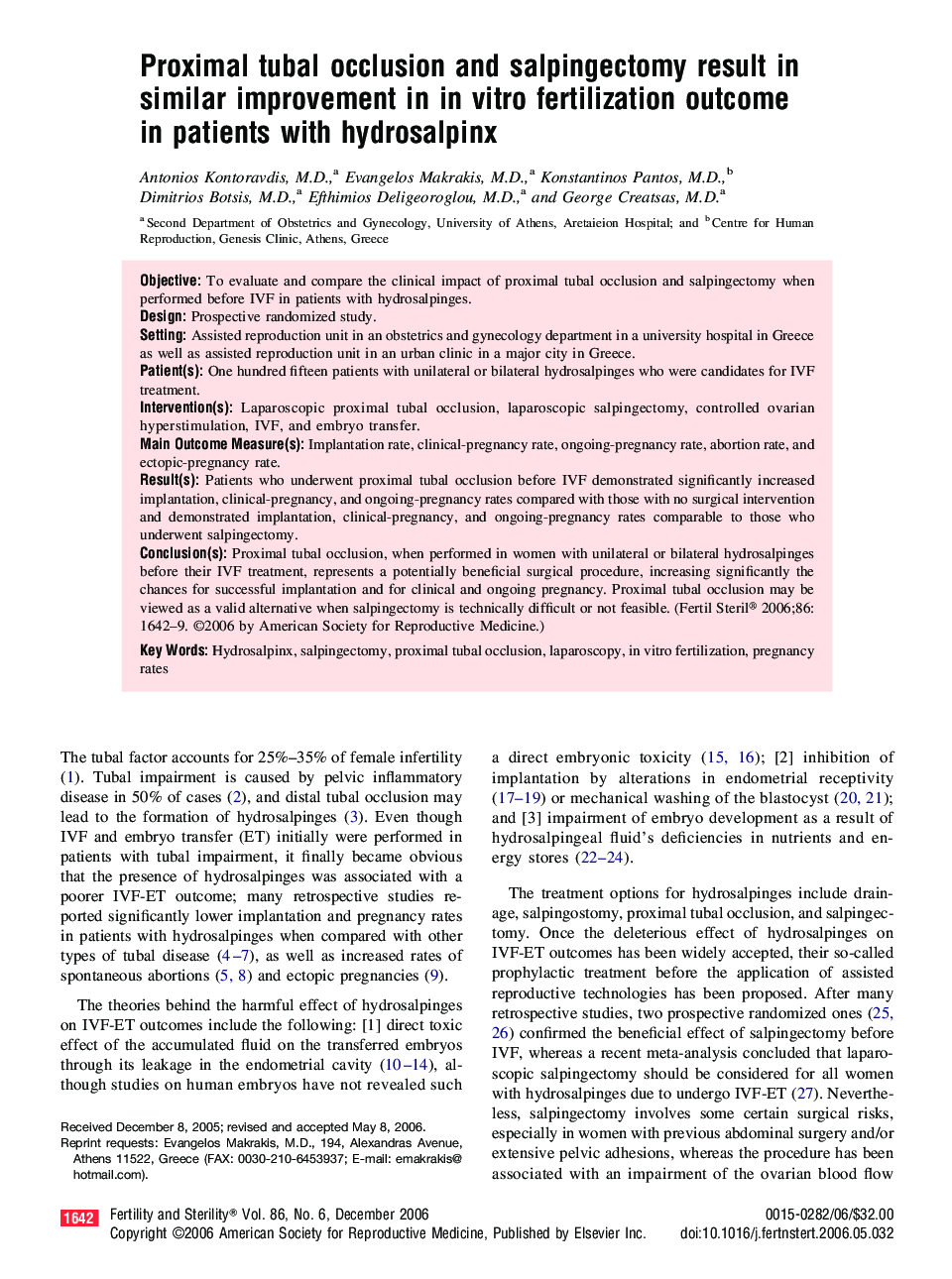| Article ID | Journal | Published Year | Pages | File Type |
|---|---|---|---|---|
| 3937628 | Fertility and Sterility | 2006 | 8 Pages |
ObjectiveTo evaluate and compare the clinical impact of proximal tubal occlusion and salpingectomy when performed before IVF in patients with hydrosalpinges.DesignProspective randomized study.SettingAssisted reproduction unit in an obstetrics and gynecology department in a university hospital in Greece as well as assisted reproduction unit in an urban clinic in a major city in Greece.Patient(s)One hundred fifteen patients with unilateral or bilateral hydrosalpinges who were candidates for IVF treatment.Intervention(s)Laparoscopic proximal tubal occlusion, laparoscopic salpingectomy, controlled ovarian hyperstimulation, IVF, and embryo transfer.Main Outcome Measure(s)Implantation rate, clinical-pregnancy rate, ongoing-pregnancy rate, abortion rate, and ectopic-pregnancy rate.Result(s)Patients who underwent proximal tubal occlusion before IVF demonstrated significantly increased implantation, clinical-pregnancy, and ongoing-pregnancy rates compared with those with no surgical intervention and demonstrated implantation, clinical-pregnancy, and ongoing-pregnancy rates comparable to those who underwent salpingectomy.Conclusion(s)Proximal tubal occlusion, when performed in women with unilateral or bilateral hydrosalpinges before their IVF treatment, represents a potentially beneficial surgical procedure, increasing significantly the chances for successful implantation and for clinical and ongoing pregnancy. Proximal tubal occlusion may be viewed as a valid alternative when salpingectomy is technically difficult or not feasible.
